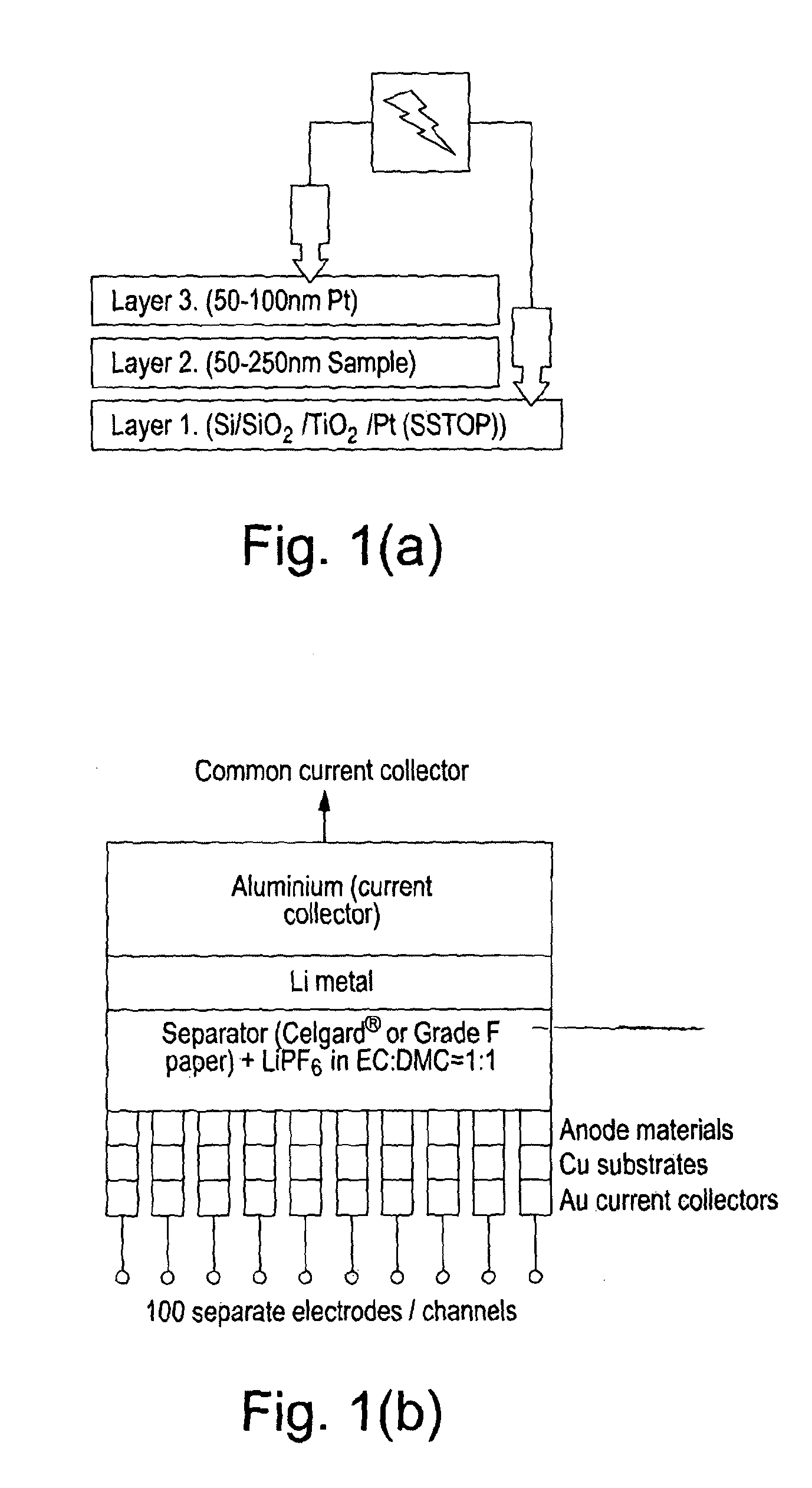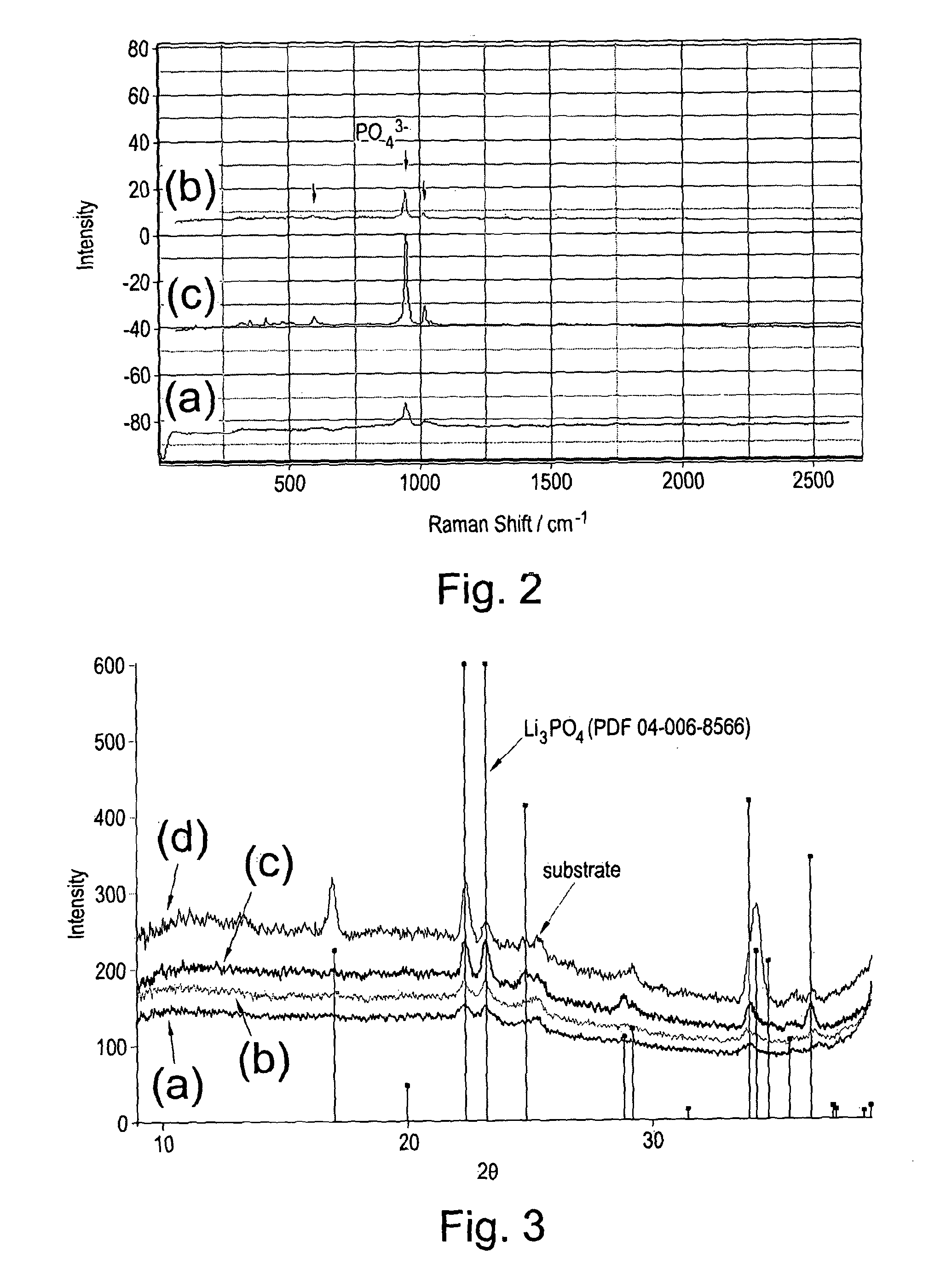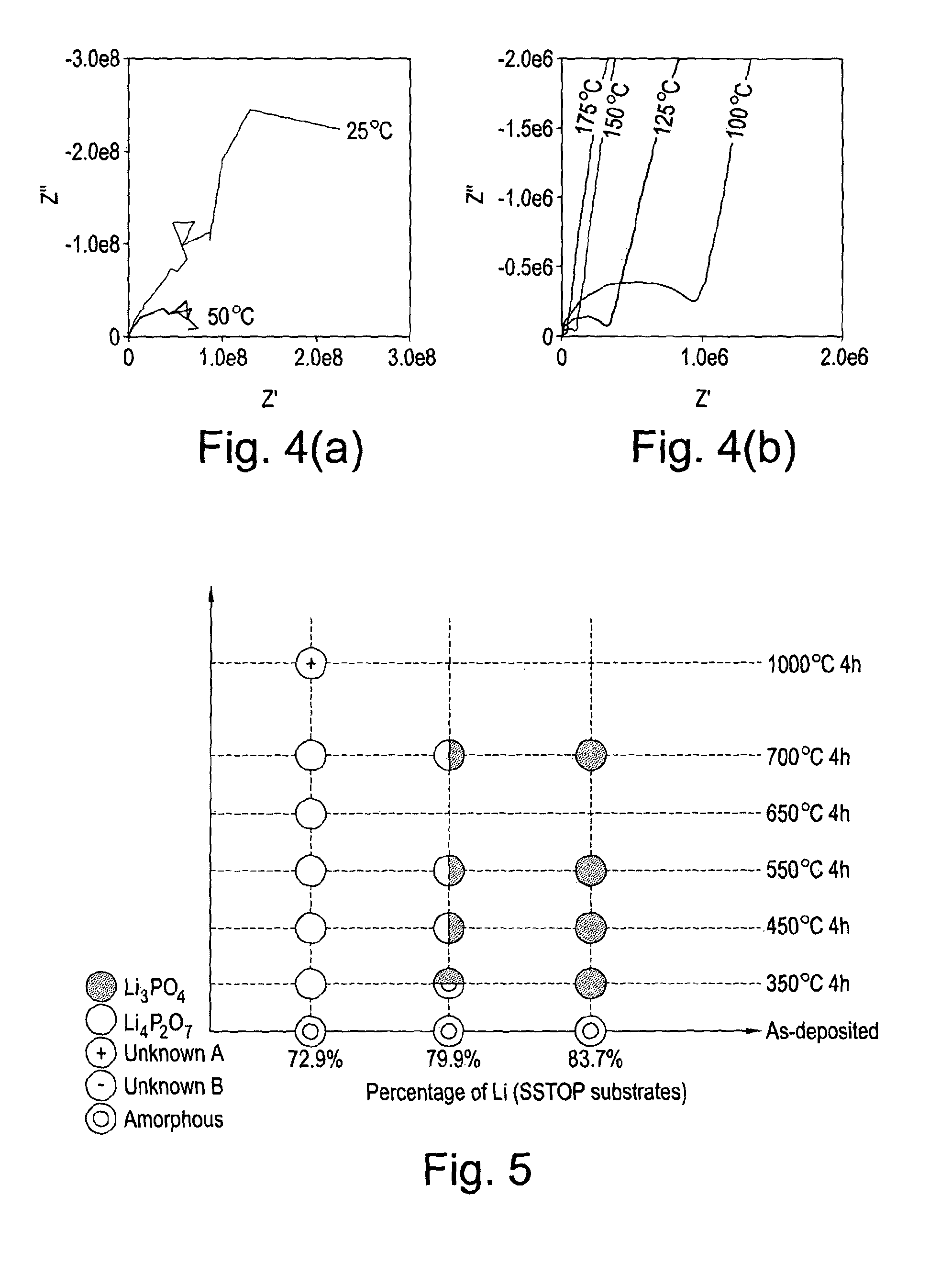Vapour deposition process for the preparation of a chemical compound
a chemical compound and vapour deposition technology, which is applied in the direction of cell components, final product manufacturing, sustainable manufacturing/processing, etc., can solve the problems of difficult control and significant difficulties in the exact composition of the thin film thereby produced, and achieve the effect of facilitating discovery and promoting in-situ crystallisation in the film
- Summary
- Abstract
- Description
- Claims
- Application Information
AI Technical Summary
Benefits of technology
Problems solved by technology
Method used
Image
Examples
example 1
Deposition and Characterisation of Lithium Ortho-Phosphate (Li3PO4)
[0091]A series of uniform composition samples were prepared for characterisation and electrical measurements. The deposition of Li3PO4 films was achieved by co-depositing Li, P, and O in the appropriate atomic ratios on Si and Si / SiO2 / TiO2 / Pt (SSTOP) substrates. The evidence for the formation of the phosphate is the observation of the expected Raman bands in the as deposited sample at approximately 950 cm−1 and the observation of corresponding X-ray powder patterns in the samples after annealing in an oxygen gas atmosphere (FIGS. 2 and 3). The ionic conductivities of a series of Li3PO4 samples were measured as a function of annealing temperature. The results of impedance and DC measurements are shown in Table 1.
[0092]
TABLE 1The electrical properties of Li3PO4 thin film samples measuredusing impedance spectroscopy and DC current decay curves at constantvoltage. (N.b., the RAC values correspond to the low frequencyZ′ a...
example 2
Deposition and Characterisation of Mixtures of Lithium Ortho- and Pyro-Phosphate (Li3PO4 and Li4P2O7)
[0099]In a manner similar to Example 1, the deposition of mixed phases (i.e., lithium ortho-phosphate (Li3PO4) and lithium pyro-phosphate (Li4P2O7) films) or pure lithium pyro-phosphate was achieved by co-depositing uniform layers of Li, P, and O in the appropriate atomic ratios on Si and Si / SiO2 / TiO2 / Pt (SSTOP) substrates. In FIG. 5 the results of XRD analysis of a series of LIPOx samples with Li contents ranging from 72.9 to 83.7 at. % Li are shown as a function of annealing temperature (Note: The compositions were measured vs. NIST 610 and thus have a systematic error that over estimates the Li content relative to P by approximately 5 at. %). It is apparent from this data that the nature of the material synthesised depends, among other things, primarily on the atomic composition of the film. The composition of each specific point on the sample is determined by the relative deposit...
example 3
Deposition and Characterisation of Mixtures of Lithium Ortho- and Gyro-Phosphate (Li3PO4 and Li4P2O7) as Gradients on a Single Substrate
[0100]The co-deposition of a gradient of Li metal in the presence of atomic P and O produces a compositional variation across the sample substrate. This method of physical vapour deposition is termed Wedge Growth PVD (or HT-PVD). As shown above (Example 1), conclusive evidence for the formation of the target lithium phosphates is the observation of the expected Raman spectrum for the materials. According to the wedge growth effect, the composition of a specific point on the sample is determined by the relative deposition rates of the component elements at that point, which in this example is determined by the wedge gradient imposed on the Li source. A gradient composition sample was prepared in which a constant flux of oxygen and phosphorus was present during the deposition of a gradient in the Li content. The Raman spectra obtained as a function of...
PUM
| Property | Measurement | Unit |
|---|---|---|
| atomic number | aaaaa | aaaaa |
| temperature | aaaaa | aaaaa |
| temperature | aaaaa | aaaaa |
Abstract
Description
Claims
Application Information
 Login to View More
Login to View More - R&D
- Intellectual Property
- Life Sciences
- Materials
- Tech Scout
- Unparalleled Data Quality
- Higher Quality Content
- 60% Fewer Hallucinations
Browse by: Latest US Patents, China's latest patents, Technical Efficacy Thesaurus, Application Domain, Technology Topic, Popular Technical Reports.
© 2025 PatSnap. All rights reserved.Legal|Privacy policy|Modern Slavery Act Transparency Statement|Sitemap|About US| Contact US: help@patsnap.com



